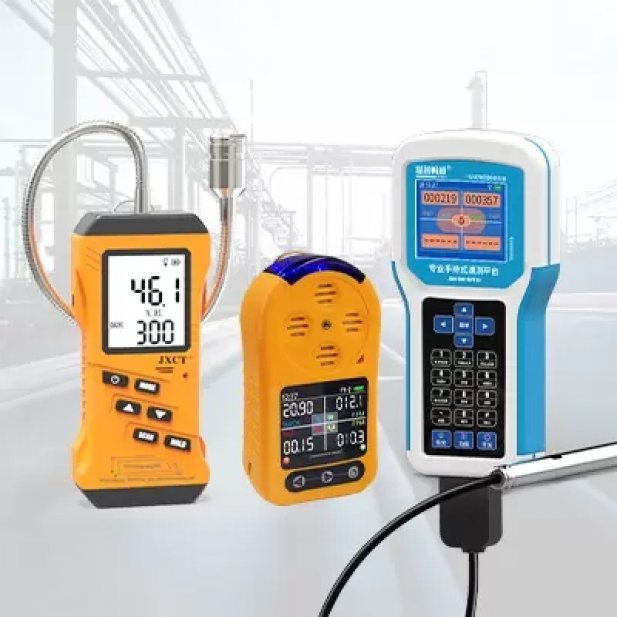Background:
Multi-gas detector is a kind of instrument used to detect a variety of gases in the environment, which is widely used in environmental protection, safety production, chemical production and other fields. With the continuous progress of science and technology, the types and performance of multi-gas detection instruments are also constantly improving and improving. This article will give a detailed introduction to the different types and characteristics of multi-gas detectors so that readers can better understand this field.
Types of multi-gas detector:

Catalytic combustion gas detector
Catalytic combustion gas detector is an instrument that uses the principle of combustion reaction between gas and catalyst to detect combustible gas. It has the advantages of wide measuring range, fast reaction speed, simple structure and cheap price. However, it should be noted that the catalytic combustion gas detector has a poor detection effect on non-flammable gases, and is susceptible to interference from other gases in the environment.
Electrochemical gas detector
Electrochemical gas detector is an instrument that uses electrical signals generated by chemical reactions to detect gases. It has high sensitivity and accuracy for the detection of toxic and harmful gases. The electrochemical gas detector has the advantages of wide measuring range, fast response speed, simple structure and long service life. However, it should be noted that the detection of some gases by the electrochemical gas detector may be interfered with by other gases in the environment.
Infrared gas detector
Infrared gas detector is an instrument that uses the absorption characteristics of different gases to detect gases. Its advantages are high measurement accuracy, strong anti-interference ability and wide measurement range. However, it should be noted that the structure of the infrared gas detector is more complex, the price is higher, and it needs to be calibrated regularly.
Laser gas detector
Laser gas detector is an instrument that uses laser interference, diffraction and other optical characteristics to detect gas. Its advantages are high measurement accuracy, strong anti-interference ability and wide measurement range. At the same time, the laser gas detector also has the advantages of non-contact measurement, and can be used for gas detection in harsh environments such as high temperature and high pressure. However, it should be noted that the structure of the laser gas detector is more complex, the price is higher, and the need for regular maintenance and calibration.
Features of multi-gas detector:
Reliability: The multi-gas detector must have a high degree of reliability to ensure that it can accurately and reliably detect gas concentrations in a variety of environments and conditions. For this reason, multi-gas detectors usually use a variety of sensors and algorithms to ensure the accuracy of measurement results.
Real-time: multi-gas detector must have the characteristics of real-time, in order to find gas leaks or abnormal situations in time, and take appropriate measures. For this reason, multi-gas detectors usually use high-speed sampling technology to achieve fast response and real-time monitoring.
Intelligent: The multi-gas detector must have intelligent characteristics in order to automatically identify and distinguish different gases, and take corresponding alarm and treatment measures according to the concentration and type of gas. For this reason, multi-gas detectors usually use artificial intelligence technology and computer technology to achieve intelligent analysis and processing.
Portability: The multi-gas detector must have the characteristics of portability in order to carry out mobile detection in the field, convenient for users to carry and use. For this purpose, multi-gas detectors usually use lightweight materials and compact designs to reduce volume and weight.
Ease of use: The multi-gas detector must have the characteristics of ease of use, so that users can quickly master the operation and use of the instrument. For this reason, the multi-gas detector usually adopts a humanized design and operation interface to facilitate the user's intuitive operation and use.
Easy maintenance: Multi-gas detectors require regular calibration and maintenance to ensure their accuracy and reliability. Therefore, the multi-gas detector must have the characteristics of easy maintenance, so that users can quickly and easily carry out instrument maintenance and repair work. For this reason, multi-gas detectors usually adopt modular design and technology to facilitate quick replacement and maintenance by users.
Multiple output modes: The multi-gas detector can adopt a variety of output modes, such as digital signal, analog signal, wireless transmission, etc., so that users can choose and use according to actual needs. This can not only meet the needs of different users, but also provide users with more choice space and flexibility.








